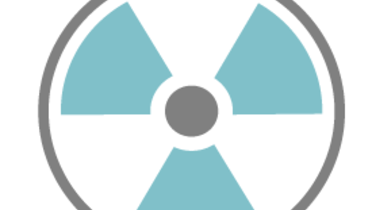-
0
Patient Assessment
- 0.1 Patient demand
- 0.2 Overarching considerations
- 0.3 Local history
- 0.4 Anatomical location
- 0.5 General patient history
-
0.6
Risk assessment & special high risk categories
- 5.1 Risk assessment & special high risk categories
- 5.2 age
- 5.3 Compliance
- 5.4 Smoking
- 5.5 Drug abuse
- 5.6 Recreational drugs and alcohol abuse
- 5.7 Parafunctions
- 5.8 Diabetes
- 5.9 Osteoporosis
- 5.10 Coagulation disorders and anticoagulant therapy
- 5.11 Steroids
- 5.12 Bisphosphonates
- 5.13 BRONJ / ARONJ
- 5.14 Radiotherapy
- 5.15 Risk factors
-
1
Diagnostics
-
1.1
Clinical Assessment
- 0.1 Lip line
- 0.2 Mouth opening
- 0.3 Vertical dimension
- 0.4 Maxillo-mandibular relationship
- 0.5 TMD
- 0.6 Existing prosthesis
- 0.7 Muco-gingival junction
- 0.8 Hyposalivation and Xerostomia
- 1.2 Clinical findings
-
1.3
Clinical diagnostic assessments
- 2.1 Microbiology
- 2.2 Salivary output
-
1.4
Diagnostic imaging
- 3.1 Imaging overview
- 3.2 Intraoral radiographs
- 3.3 Panoramic
- 3.4 CBCT
- 3.5 CT
- 1.5 Diagnostic prosthodontic guides
-
1.1
Clinical Assessment
-
2
Treatment Options
- 2.1 Mucosally-supported
-
2.2
Implant-retained/supported, general
- 1.1 Prosthodontic options overview
- 1.2 Number of implants maxilla and mandible
- 1.3 Time to function
- 1.4 Submerged or non-submerged
- 1.5 Soft tissue management
- 1.6 Hard tissue management, mandible
- 1.7 Hard tissue management, maxilla
- 1.8 Need for grafting
- 1.9 Healed vs fresh extraction socket
- 1.10 Digital treatment planning protocols
- 2.3 Implant prosthetics - removable
-
2.4
Implant prosthetics - fixed
- 2.5 Comprehensive treatment concepts
-
3
Treatment Procedures
-
3.1
Surgical
-
3.2
Removable prosthetics
-
3.3
Fixed prosthetics
-
3.1
Surgical
- 4 Aftercare
頭頸部がん
Key points
- 臨床の口内検査によるスクリーニング後、高リスクの頭頸部がん(HNC)男性患者群において生存率が増加しています。
- 米国およびヨーロッパでは、40歳~50歳の口腔がん発生率が過去10年間で倍増しています。
- 放射線治療を含むHNCの総合的治療には、インプラント手術を行うための被照射部位の硬・軟組織治療に関する特別な知識およびスキルが必要です。
HNCの疫学および予後に関する事実
頭頸部がんを代表するのは、主に頭頸部扁平上皮がん(HNSCC)です。発生率は、女性より男性が高くなっています(2,8:1)。ヨーロッパおよび米国の若年層では、ヒトパピローマウイルス(HPV)がHNCの発生率増加と関連があることが示されています。NHCの一般的なリスク要因は、喫煙、アルコール乱用、噛みタバコ(betel quid)です。
HNCの予後は、診断の時期に左右され、首の所属リンパ節における腫瘍の広がりと密接な関係があります。5年生存率は、診断時点で80%(ステージI)から19%(ステージIV)に低下します。
HNC早期発見の不足および歯科医の役割
60%の患者は予後不良を特徴とする腫瘍後期(III~IV)で症状が現れることから、HNCの早期発見は必須です。歯科医による口内検査を年1回以上実施した場合、口腔がん高リスク男性群の5年生存率増加が認められました。疑わしい病変は、病理組織的に分類されるまで2週間以上観察するべきではありません。摘出生検は、HNSCC 診断を確定または除外するための診断法のゴールドスタンダードです。
HNCの総合的治療およびインプラント手術
HNCの総合的治療は、切除手術とアジュバント放射線(化学)療法から成ります。顎骨および軟組織を再建手術によって回復することが、インプラントに基づくリハビリテーションの前提条件となります。HNC治療に伴う顎骨および口腔周囲軟組織への照射は、骨の再生不全および口腔周囲組織における線維収縮性の瘢痕を招きます。照射された顎骨における歯科インプラントの全生存率は低下します(2~22年度の全生存率80~90%)。総照射線量が>55 Gy の場合、インプラント喪失のリスクを有意に高めることが示されています。頭頸部放射線治療の一般的な後期合併症は、顎骨の被爆骨壊死です。



